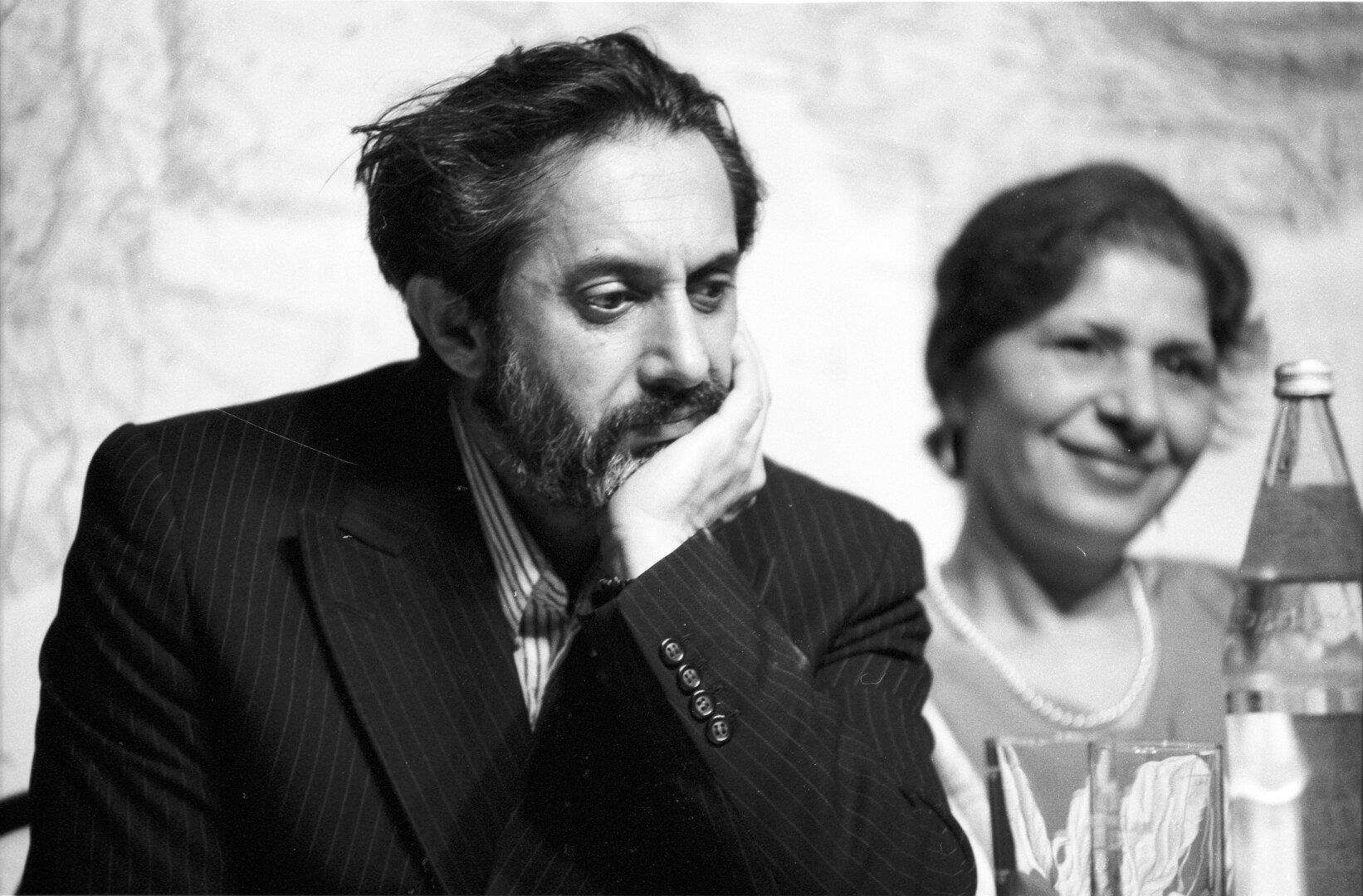The primary objective of this archive section is to pool knowledge about international Roma literatures. To date, the rich variety of textual productions has hardly made an impression on the public consciousness. That is the motive for our presentation here of the life and work of numerous Roma writers, from all over Europe as well as some non-European countries, together with examples of texts by Yenish authors. The content focusses on the self-representation, identity constructions and cultural memory of Sinti and Roma.
Curated by Beate Eder-Jordan


Mehmet Emir | Ilija Jovanović with Fatma Heinschink (background) in the Viennese *InterkulTheater*, 21 April 1994 | photograph | Austria | April 21, 1994 | lit_00663 Rights held by: Mehmet Emir | Licensed by: Department of Folk Music Research and Ethnomusicology – University of Music and Performing Arts Vienna | Licensed under: Rights of Use | Provided by: Department of Folk Music Research and Ethnomusicology – University of Music and Performing Arts Vienna (Austria) | Photographed on: 21.04.1994 (Vienna/Austria)
Alongside written literary texts, the RomArchive project presents texts handed down orally in various versions of Romani from the holdings of the Phonogrammarchiv of the Austrian Academy of Sciences as well as literary readings, lectures and interviews with writers. A separate section is devoted to the representation of Sinti and Roma in books for children and young people. Articles on current or controversial topics – such as ‘Roma and writing’ or ‘Romani authors going digital’ – complete the presentation.
The concept underpinning the Archive’s literature section was inspired by a personal encounter in 1990 between curator Beate Eder-Jordan and the well-known writer and scholar Leksa Manush. During a long conversation at the Fourth World Romani Congress in Poland, he gave Eder-Jordan, then a student, an overview of the history of Russian and Soviet Roma literature of the 20th century.
The curatorial concept for RomArchive’s literature section is an overview of the development of Roma literature in various countries and regions, written by experts, and illustrated by means of selected literary examples.
The origins of Roma literature date back to the first decades of the 20th century. Early developments took place predominantly in the former Soviet Union and in Romania; while progress came to a temporary halt because of coercive political measures, this situation has long since improved. The last decade has also witnessed the birth of Romani Literary Studies as a subject (cf. Eder-Jordan 2015a, external link).
A question of terminology
The term ‘Roma literature’ is a construct. What we understand by ‘literature’ changes over time and, as the British literary scholar Terry Eagleton (1983) points out, demonstrably has a close relationship to societal ideologies. If ideologies can determine what is to be regarded as literature, this is even more the case when it comes to the phenomenon of ‘Roma literatures’. The complex question of ethnic identity also plays a role here (cf. Eder-Jordan 2015b, p. 59f.; external link).
The term ‘Roma literature’ is a construct.
The term ‘Roma literatures’ evades clear definition. It can be understood to encompass both texts in Romani and in the countless other languages that are spoken by people who call themselves Roma, amongst other designations, or who are referred to as Roma or with other labels by other people. Literary texts written in Romani can be counted as such, regardless of the so-called ‘ethnic affiliation’ of the authors. As with the definition of literature, when it comes to the definition of ‘Roma literatures’, some people and groups exercise power over other people and groups, rendering the very act of definition problematic. Who has the right to determine what ‘Roma literatures’ are?
The assignment of works to the category ‘Roma literature’ is one possible option among numerous others, meeting both approval and disapproval from the authors themselves. Discussions about the advantages and disadvantages of using this term will be the subject of future research and negotiations, and is an issue on which RomArchive’s literature section would also like to provide input.
Beate Eder-Jordan



